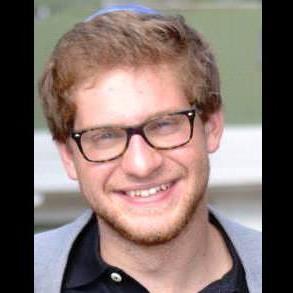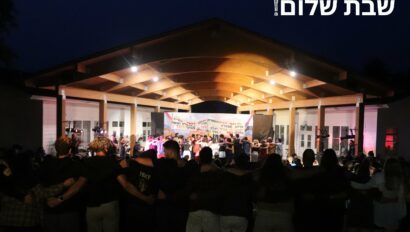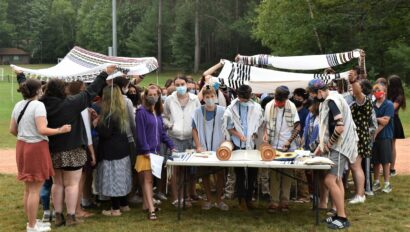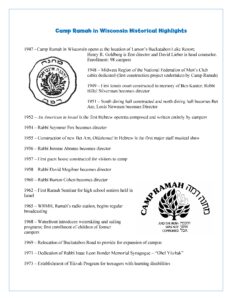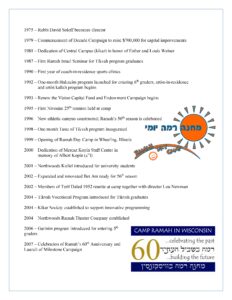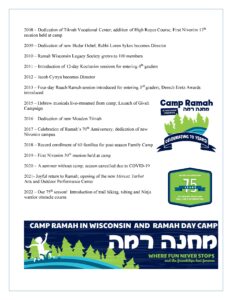Please enjoy a D’var Torah this week from Jared Skoff, Rosh Tikvah 2017 and 2018. Originally from Cleveland, Jared spent the past four summers at Ramah Wisconsin, after working at Ramah Canada for three summers. This is Jared’s third year working year-round for Camp Ramah, first as a Ramah Service Corps Fellow in Detroit, and now as the Program Director at the National Ramah headquarters in New York City.
Living in Jewish Time
by Jared Skoff
My great grandfather didn’t have a birthday. When Yosef Rapoport was born in Riga, Latvia, in 1909, no one recorded the calendar date. Instead, the Rapoport family commemorated their son’s birth during the proper season. In Yosef’s case, this was Shabbat HaGadol, which we mark this weekend and each year on the Shabbat before the start of Pesach.
What my great grandfather’s “birthday” lacks in temporal accuracy, it gains in ambience. Pesach is coming. The house is starting to look cleaner, a bit rearranged, the cooking has started for the seders and the bread is out of sight. If my great-great-grandmother was anything like my own mother, young Yossele was already confined to eating his chometzdik kichel snacks in the Latvian outhouse, and would not have dared bring any leaven into the kitchen. Happy birthday. The familiar aura and feeling of Shabbat HaGadol is more universal and better defined than that of, say, March 23rd.
My ancestors lived exclusively in Jewish time. There was a Jewish cycle to their year, defined by holidays, observances, fast days, each with their own set menus, practices, and ambience. We still feel that ambience, the sensory conglomeration that helps us define what smells like Shabbat, what tastes like Pesach, what feels like Yom Kippur – the tangible and intangible gut feelings that accompany the rhythms of our Jewish year. Each Jewish holiday and observance is accompanied by different experiential components – psychological, tactile, and sensory.
Though we may not still measure our birthdays in Jewish time, we still maintain a certain intuition of the cycles of the traditional Jewish calendar. Shabbat at camp has a definite aura, with components both traditional and modern. Yes, when sundown comes there is a certain drop in adrenaline, and a shared sense of relaxation, but Ramah has developed its own rhythms and cycles. When the chocolate milk comes out during the picnic lunch on Friday at Camp Ramah in Wisconsin, everyone in camp knows that Shabbat is about to begin. Kikar dancing kicks off and the day quickly fades into Shabbat.
Camp has its weekly rhythms and its seasonal rhythms. Zimriyah has an aura. Yom Sport has an aura. The nine days has an aura. Even Week Six has an aura.
In its facilitation of collective Jewish experience, Ramah functions as a mirror of the Jewish year – moments for happy and sad, boisterous and quiet, celebration and reflection. In the fall, we recite the somber Yizkor memorial prayers on Shemini Atzeret and quickly move into rejoicing on Simchat Torah later that day. At camp, we fast on Tisha B’Av and by the next day transition into play practice and performance. We conclude Shabbat with havdalah and immediately change clothes for the basketball game. Like the Jewish calendar, camp fosters the full spectrum of emotions and mood transitions, the same ups and downs within a Jewish rhythm and idiom.
Judaism is not lived solely in the positive moments, but also in the disappointments. I remember my maternal great grandfather’s birthday on Shabbat HaGadol, as I remember my paternal grandfather’s yahrzeit on Pesach. These moments also fulfill two purposes in connecting me to my past. My grandfather’s yahrzeit is a personal memory – I remember when he died, and feeling his absence at the seder the next day; and my great grandfather’s birthday is a transmitted memory – this Shabbat connects me to my past through the birthday of a man whom I sadly never got to know.
Through the equilibrium of the year’s moments, the birthdays and the yahrzeits, solemn Yom Kippur and joyous Purim, we learn what it means to be part of a community. We share in the highlights, the low points, the collective memories, and the simply mundane. Every camper has the opportunity to perform for the rest of camp in a play, and each camper has the responsibility of siddur hamakom (room set-up) and being a meltzar (waiter). To participate only in the highlights is to resist the togetherness and growth that comes with sharing the full experience. To be a whole-hearted member of a people, or an aidah, is a maturing experience that nurtures strength – both personal resilience and external support.
During the winter months, and this summer at Ramah, we should aspire to be “all in” – to participate and share in the full experience, and to earn the strength that comes from celebration, adversity, reflection, and routine shared with community.
